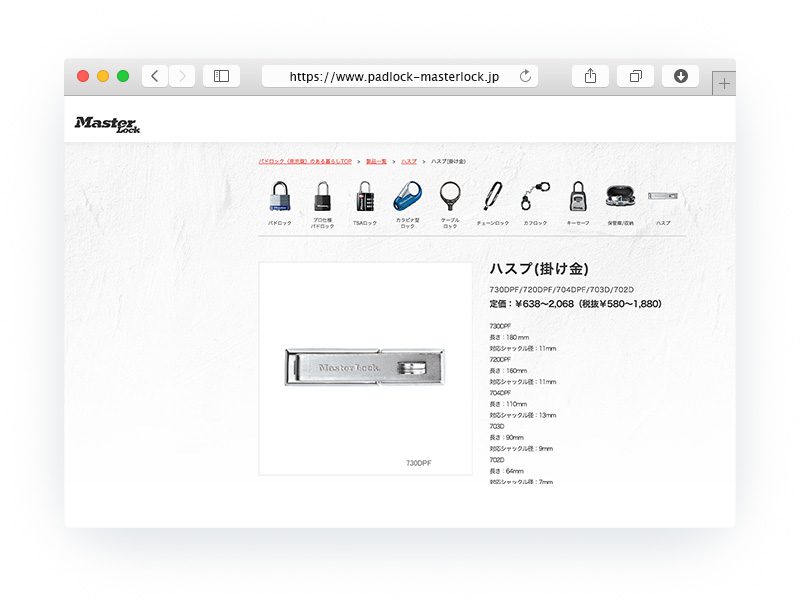To reach new global markets, it is critical to traduire votre site Web to communicate with new customers in their preferred languages. While website translation helps attract international visitors, combining website translation and localization is what truly fosters genuine connections and drives higher conversion rates.
Translation vs. Localization: What’s the Difference?
Many people use "translation" and "localization" interchangeably, but they are not the same. Both processes help businesses expand internationally, yet each serves a different role in delivering an optimal user experience. Without effectively "speaking" your audience's language-both literally and culturally-how can you engage them successfully?
While translation and localization offer similar functionalities, there are essential differences between them. Understanding what distinguishes these terms, processes, and services, helps you extend the reach of your website more efficiently and profitably. To understand how website translation and localization services differ, you need to define the two concepts.
The concept of Traduction de sites Web is very straightforward. Website translation is the process of adapting your website content from its original language into other languages, often word-for-word, to make it accessible to global customers. Translated content mirrors the style and tone of source content but doesn’t consider the context.
[Button: Learn About MotionPoint’s Website Translation Services]
What is Website Translation?
Website translation and localization services go beyond a word-for-word translation experience. Il s'agit d'affiner le contenu du site Web en prenant en compte la culture, la langue et le ton de la langue locale afin de proposer aux utilisateurs une expérience pertinente et efficace. La localisation tient compte des variantes linguistiques utilisées dans une région ou un pays et adapte tous les éléments du contenu Web aux habitudes de consommation locales ou régionales. The localization method modifies the language and website elements to appeal to the linguistic and cultural preferences of the target customers.
There are several elements of website translation and localization that are important to consider when developing a multilingual website:
- Language and regionalism allow content to speak closely to the target audience. Par exemple, supposons que certaines phrases ou certains concepts concernent particulièrement un pays ou une région où vous souhaitez développer votre activité. Dans ce cas, il est important de montrer aux clients que vous savez qui ils sont et pourquoi ils doivent s'adresser à votre entreprise.
- Ease of navigation means users can immediately find the website content in their language and begin interacting with the website seamlessly.
- Les éléments culturels enhance the user experience and create a feeling of closeness with the target audience. Exemples de contenus culturels :
- Couleurs, formes, tailles et styles
- Images, icônes et éléments graphiques
- Les codes sociaux comme l'humour, les étiquettes et les symboles
- Valeurs sociétales, relations et croyances
- Les éléments transactionnels include functional content that customers rely on to navigate a website, understand products and services, and ultimately, do business on a website, including:
- Le format de la date et de l'heure, les numéros de téléphone et les informations de contact
- Les poids, mensurations et références géographiques
- La langue et le contenu linguistique, la description des produits et les avis
- Communication elements that build trust and help the customer understand that they are valued:
- Coordonnées du service client local
- Informations juridiques
While translation is one aspect of localization, localizing website content is a fundamental next step after translation. Therefore, website translation and localization are equally important for multilingual website development, both as standalone practices and together.
What is Transcreation?
Transcréation is a creative way of translating a message from one language to another. It keeps the same tone, style, and context, and makes sure the original meaning is not lost. The goal of transcreation is to recreate the message in a way that resonates with the target audience and maintains cultural relevance.
Used in marketing and branding, transcreation complements website translation and localization by adding creative flexibility for emotional or persuasive messaging across cultures.
Why is Website Translation Important?
When travelling to another country, it’s helpful to know simple phrases in the local language such as "please," "thank you," and "how much". But if you weren’t fluent in the language, you probably became frustrated by your inability to communicate in other situations.
Your target market may face a similar challenge when interacting with your business online. Ils ont besoin d'un site Web qui « parle leur langue », afin de pouvoir comprendre facilement votre message. La frustration et la confusion ne sont pas envisageables. À la moindre difficulté, ils quitteront souvent votre site avant conversion.
Websites presented in local languages yield better market responses than those that aren't. According to Common Sense Advisory, nearly 73% of customers prefer to purchase a product or service from a site that provides information in their own language, and 56% of consumers said the ability to obtain information in their own language is more important than price. This shows that website translation and localization play a critical role in conversion.
So, why should you localize your website? In a nutshell, while translation is vital, it will only get you so far.
Lorsque votre clientèle internationale accède à votre site, elle ne doit pas rencontrer d'obstacles. Si c'est le cas, ils l'abandonneront.
Machine vs. Human Translation: Which Is Better?
Machine translation (like Google Translate) is cost-effective for basic translations, but it lacks cultural and contextual accuracy. It also doesn't generate SEO-friendly, indexable pages, limiting organic traffic potential.
Human translation, on the other hand, ensures nuance, accuracy, and cultural appropriateness. Combining AI-powered tools with human review often yields the best results-especially for high-stakes website translation and localization projects.
Google Translate also doesn’t create searchable, indexable versions of those translated pages, which is important from an SEO standpoint.
How Localization Increases Engagement
Website localization goes beyond the word-for-word linguistic conversion of conventional translation and instead uses words and phrases that resonate within specific markets. Pairing website translation and localization can dramatically improve trust, engagement, and brand perception in new regions.
Les traductions génériques, communes à une région entière, sont très efficaces, mais la localisation s'avère beaucoup plus persuasive pour une clientèle multilingue.
Prenez par exemple la différence entre les mots « chaussure » et « soulier ». Les deux termes ont le même sens mais le second passe bien mieux au Québec qu'en France.
But website localization can go beyond word choice. Les experts en marketing adaptent souvent leurs sites Web multilingues pour mettre en avant des fêtes, traditions ou coutumes locales. Ceci témoigne d'une maîtrise de la culture locale du marché et renforce la confiance du client.
Voici d'autres exemples de localisation : créer des promotions spécifiques pour certains marchés ou concevoir un message unique pour favoriser la confiance, afin d'asseoir votre crédibilité sur de nouveaux marchés.
In the early days of serving a multilingual market, it was not uncommon for a company to be greeted with local skepticism. La clientèle locale se demande souvent s'il s'agit d'une entreprise répondant au marché et à ses besoins. Lorsque les marques utilisent des contenus localisés, elles ne donnent pas l'impression d'être opportunistes, mais authentiques.
Localization Considers Format
While website translation covers language, localization considers how language is visually and functionally presented. Layout adjustments, reading direction, and word count all play into effective website translation and localization.
For instance, certain romance languages like French and Spanish need about 30% more words than English to get the same message across. Conversely, Finnish actually requires 30–40% fewer words. Website translation only deals with the language, but localization makes sure copy looks right.
Translation vs. Localization: What’s Best for Your Website?
At this point, you're probably asking yourself: Should I invest in translation or localization for my website? The answer often lies in using both. Together, website translation and localization allow businesses to scale internationally while creating deeper, more authentic user experiences.
Websites usually contain several content types, from marketing copy to legal and technical information and user-generated forum content. Pour des questions d'efficacité et de coûts, demandez-vous quels contenus doivent être localisés et quel sont ceux qui peuvent simplement être traduits. Website translation and localization help you connect with your target audience and reach them on a more personal level.
La traduction seule peut être utile pour répondre à un large public composés d'individus qui partagent la même langue, même s'ils ne vivent pas dans le même pays. Quelle que soit son origine, une traduction générale permet au lecteur de saisir le message. Ce phénomène est très répandu aux Etats-Unis dans le cas des personnes partageant la même langue, l'espagnol par exemple.
Même si les Etats-Unis comptent des hispanophones originaires de différentes parties du monde, ils partagent diverses nuances culturelles, tournures de phrase et dialectes. Dans ce cas, une traduction plus généraliste et bien conçue évite délibérément les phrases ou termes régionalistes issus d'un pays particulier et aborde ce marché comme celui d'une population hispanophone vivant aux Etats-Unis.
La traduction directe est la solution la moins coûteuse. Certains travaux de traduction ou pages Web moins importants ne nécessitent pas une traduction humaine. MotionPoint peut recourir à une traduction automatique pour une page et à la traduction humaine pour d'autres pages plus importantes.
La localisation crée davantage de cohérence, mais elle est plus coûteuse. Localization also requires content verbiage translation upkeep and considers web design as well. Cette démarche peut consister à modifier des graphismes ou à développer entièrement certaines pages Web, en fonction de la langue cible ou des différences culturelles par rapport au site Web original.
[Button: Get Started with Translating Your Website Today]
When Should You Invest in Website Localization?
Website translation and localization are best used when:
- You offer a digital service or product that you want to expand into new markets
- Your product often requires updates that need to be shared in different languages quickly and efficiently
- Your target audience’s language requires diverse formatting
- You want to cater equally to all your customers, domestic and international
- You have a dedicated customer call center in multiple languages
- Laws and regulations require you to translate content
- You have a low barrier of entry to expand into international markets
Exemples de traduction et de localisation de sites Web
MotionPoint tailors solutions for brands based on whether they need translation, localization, or a blend of both. These success stories show how website translation and localization power growth:
MotionPoint Success Stories
Localizing for Manufacturers
Master Lock, a leading U.S. manufacturer of retail and commercial security and safety products, needed both website translation and localization when they began expanding globally. Les sites Web localisés offent une vraie valeur stratégique à Master Lock. Les distributeurs et les équipes de vente utilisent le site Web de Master Lock pour recenser les informations produits nécessaires aux clients régionaux et les clients peuvent aussi accéder sur Internet aux informations complètes des produits et services Master Lock. En outre, les sites Web de Master Lock changent régulièrement en fonction des mises à jour liées à l'ajout ou au retrait d'un produit ou segment. Aussi, la qualité des traductions est vitale pour l'entreprise. A ce jour, Master Lock a traduit et localisé des sites Web en chinois simplifié, néerlandais, français, allemand, italien, japonais, portugais et espagnol.

Why Banks Need Website Translation
Rio Bank is a community bank with branches throughout the heart of Southern Texas, many of them near the Mexican border. Son activité grandissant, Rio Bank s'est aperçue qu'elle ne disposait pas du retour d'information de ses clients, nécessaire aux flux marketing et au service client. Lorsqu'un questionnaire client a été mis sur pied en espagnol, les commentaires ont grandement augmenté. Ainsi, Rio Bank a rapidement compris l'importance de communiquer avec sa clientèle hispanophone. Rio Bank a alors demandé à MotionPoint de traduire son site Web et de créer une expérience bilingue immersive pour l'ensemble de sa clientèle. La traduction du site Web a instantanément amélioré le niveau de satisfaction clients, en tenant compte d'une tranche de clients hispanophones représentant 90 %.
[Button: Help Your Business Grow Through Website Translation]

Find the Right Website Translation & Localization Solution
Expanding into new markets requires accurate translation and engaging localization. If your website doesn't feel native to your target audience, you risk losing potential customers.
MotionPoint sait que publier des contenus localisés spécifiques à un marché sur des sites Web multilingues est plus difficile qu'il n'y paraît. It requires powerful website translation technology to customize website code to present the appropriate localized content to the right customers. MotionPoint combines technology and expert linguists to deliver true website translation and localization—not just words, but intent, relevance, and conversion-ready content.
It also requires world-class translators who are fluent in languages, cultures, and customs. MotionPoint helps your business find the solutions you need for anywhere you want your business to be in the world.
Dernière modification : 03 juin 2025
